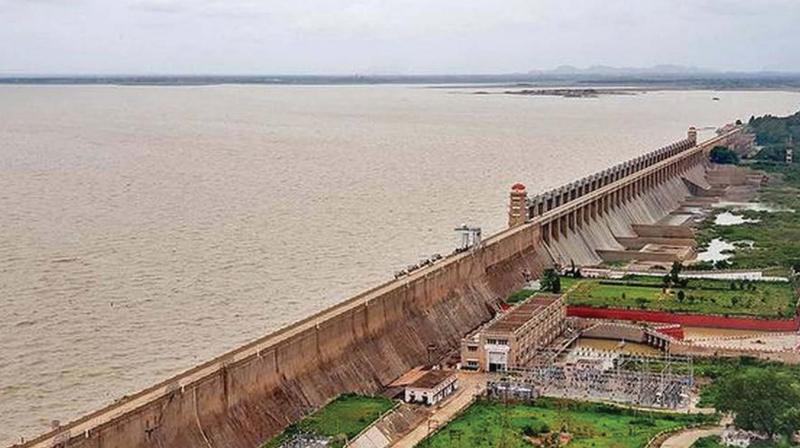Tungabhadra dam set to fill up

Ballari: The Tungabhadra dam at Hosapete which is the lifeline of six districts-three each in Karnataka and Andhra Pradesh- is just short of its maximum level by ten feet.
On Sunday, the inflow into the dam was around 76,527 cusecs taking the reservoir level to 1,622.75 feet while the full reservoir level is 1,633 feet.
Presently, the dam has 66.07 tmcft water. It has been getting good inflow owing to continuous rains in the catchment areas for the past one week which has raised the hopes of farmers about early release of water into the canals and of getting a good kharif yield.
Tungabhadra reservoir is an inter-state project catering to the drinking water and irrigation needs of six districts — Ballari, Koppal and Raichur in the state and Anantapur, Kadapa and Kurnool districts in Andhra Pradesh. In addition to the canals, farmers along the bank of the river downstream of the reservoir, depend on the river for drinking water and for irrigation.
Usually, the dam gets filled by the first fortnight of August every year and water is released from the gates on August 15 which becomes a spectacle attracting thousands of people. The dam authorities say that the Irrigation Consultative Committee (ICC), which is scheduled to meet on July 16, can take a decision to release water into all canals immediately which will be advantageous to farmers in the command area.
With 66 tmcft of water in store, even if the discharge is at the rate of 9,000 cusecs per day into all the canals, it will suffice up to October 10 (84 days). The dam water can be released into Left Bank Main Canal, Right Bank Low-level and High Level canals and also into the ancient Raya and Basava canals, simultaneously to enable commencement of agricultural operations early.
A study of the performance of the reservoir for the past 28 years revealed that good inflow was noted during the first fortnight of July for about eight years. During the past 28 years, the reservoir had not filled up in seven years (1995-96, 2001-02, 2002-03 and 2003-04, 2015-16, 2016-17 and 2017-18). During these years, farmers, however managed to cultivate the kharif crop with great difficulty.
In the past 28 years, the maximum water utilised for the kharif crop (upto November 30) was 112.098 tmcft during 1993-94 and the minimum was 66.800 tmcft in 2017-18.

